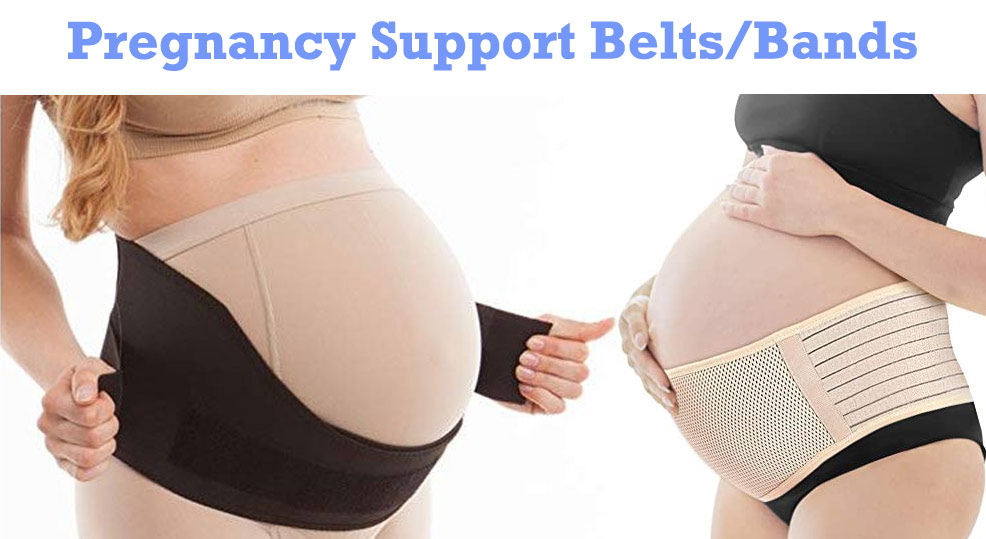The final countdown! What to expect during the third trimester of pregnancy.
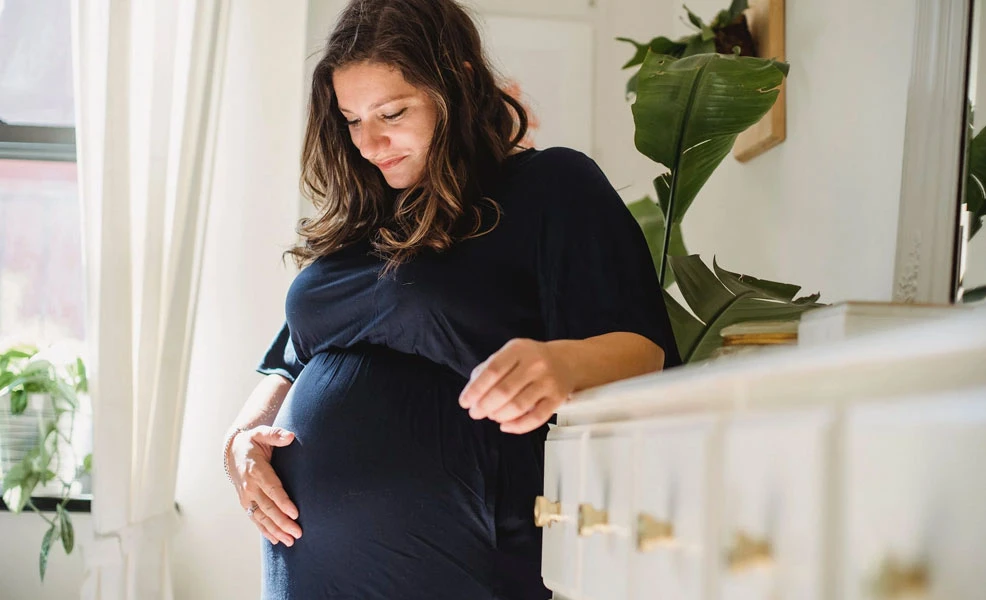
Mommyhood101 independently tests and curates baby gear to help you make informed decisions. If you buy products through links on our site, we may earn a commission.
During the third trimester of pregnancy, your baby will increase in size and weight from about the size of a football (and up to about 2 pounds in weight), to about the average birth weight of 7 pounds, 8 ounces.
This incredible third trimester transformation is marked by several changes to your body that you'll want to be prepared for. Our guide to the third trimester will fill you in on all these details, including what your baby is doing developmentally inside your belly, what to expect for symptoms, and how to manage the increasing strain on your body.
Note: Every woman will experience pregnancy and the third trimester differently. You might experience some of these symptoms very strongly, and others might be a blip on the radar. Still others might not notice any symptoms at all! That's completely normal because every woman's body is unique, responding in its own way to the hormonal, metabolic, and physiological changes that occur during pregnancy.
Table of Contents
Click on any month to jump to that section, or simply start reading! You can also print this article for some bedtime reading for you and your loved one!
- Jump back to Second Trimester
- Important Terms & Definitions
- Third Trimester: Month 7
- Month 7 Development
- Month 7 Pregnancy Symptoms
- Backache and sciatica
- Itchy skin & stretch marks
- Varicose and spider veins
- Lightheadedness & Migraines
- Symphysis pubis dysfunction (SPD)
- Stuffy and runny nose
- Melasma pregnancy mask
- Breast growth
- Clumsiness, fatigue, sleep issues
- Crazy dreams
- Frequent urination, bladder control
- Heartburn, constipation, & hemorrhoids
- Shortness of breath
- Weight gain & swelling
- Third Trimester: Month 8
- Month 8 Development
- Month 8 Pregnancy Symptoms
- Third Trimester: Month 9
- Month 9 Development
- Month 9 Pregnancy Symptoms
- Sources & References
Pregnancy: Important Definitions
Before we describe what happens during pregnancy, let's cover some basic terms that are important to know, especially when communicating with your doctor.
What are Braxton Hicks contractions? When muscles in your uterus randomly contract and relax, these are false labor contractions, also called Braxton Hicks contractions. They might feel like mild period cramps or a tightening in your tummy that comes and goes (Ref 1).
Braxton Hicks are believed to begin as early as the first trimester (Ref 2), but pregnant women usually do not feel them until the second or third trimester, with most feeling them during the third trimester.
There are four primary differences between Braxton Hicks contractions and true labor contractions. Real labor contractions are more painful, regularly spaced, get stronger with time, and get longer in duration with time. If your contractions are uncomfortable but not painful, irregularly spaced, get weaker and disappear then reappear a few hours later, and are random in duration, then they are likely Braxton Hicks contractions.
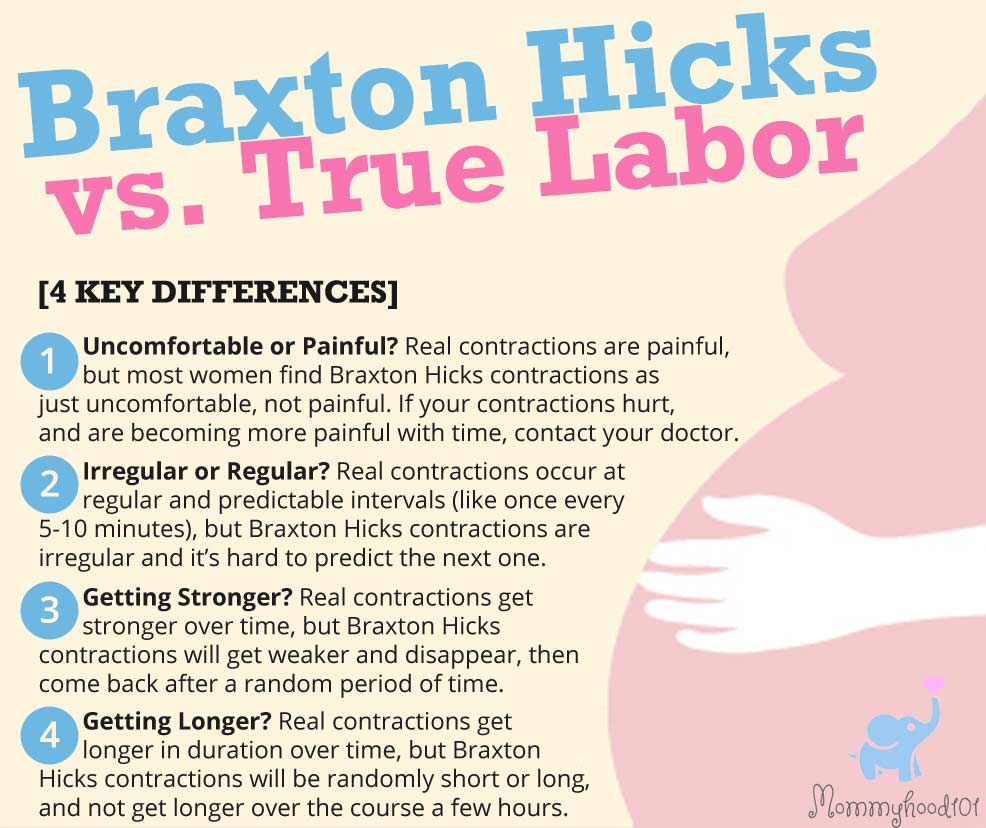
What is Placenta Previa? When the placenta grows towards the bottom of your uterus and blocks the path to the cervix, this is placenta previa. Typically, the placenta will grow towards the top or side of the uterus. In about 0.5% of pregnancies, it grows at the bottom and can affect pregnancy and the birthing process.
Early in pregnancy, placenta previa does not cause issues, and in about 90% of cases it will resolve over the course of pregnancy through what is called placental migration (i.e., the placenta will move upwards in the uterus) (Ref 3).
But if placenta previa persists towards the end of your pregnancy, your doctor will need to decide whether it is safe to pursue a vaginal delivery. If not, they might require a cesarean delivery (c-section).
What is the Mucus Plug? Like the cork on a wine bottle, the mucus plug seals your cervix shut during pregnancy. The cervix is the opening of your uterus that enters the vagina. The mucus plug serves many functions, including protecting the uterus from bacteria.
It is likely that you will lose your mucus plug (it will discharge) late in the third trimester of pregnancy. You will usually notice it while using the toilet or as a discharge in your underwear; it is usually clear or murky, and a little sticky and like a glob of mucus. Sometimes the mucus plug will fall out right as you enter labor, and sometimes it can fall out a few weeks early. Some might find these images disgusting, but it's important to know what your mucus plug will look like:

What is Cervical Dilation? Usually when your mucus plug falls out, the reason is that your cervix has begun dilating. Cervical dilation is when the path between your uterus and vagina begins to soften and open up in preparation for delivering your baby. As a woman progresses through the stages of labor, the cervix will slowly and steadily open from about 1 centimeter (about the size of a blueberry) all the way to 10 centimeters (fully dilated, about the size of a bagel).
When people talk about cervical dilation, you might also hear the term cervical effacement (or the cervix is effaced). Effacement happens at the same time as dilation, and describes the softening or thinning of the cervix during labor. So not only is the cervix becoming wider, it's also becoming softer and more elastic to help accommodate your baby's giant head!
What is Breech Position? Between about 36-38 weeks of pregnancy, your baby is likely to shift to a head-down position in the womb. Not only that, but your baby might rotate around so they are facing your back. When your baby does not turn to a head-down position before labor, this is called a breech baby. There are several breech positions, but most typically it is bum-first (feet folded up) or feet first.
Studies show that the breech presentation (breech position) occurs in about 4% of pregnancies (Ref 4), so it is relatively rare. Furthermore, a planned caesarean section is the safest approach to delivering a breech baby, as opposed to vaginal birth (Ref 5).

What is a Kick Count? Kick counting is keeping a daily record of how many times your baby moves. It's not just kicking, it can also be punches, rolls, flutters, and squirms.
Usually, you calculate how long it takes to feel 10 movements. In some cases, if your baby is having a dance party it will take just a few minutes to record 10 movements. Other times, it will take an hour or two to feel 10 movements. According to the American Pregnancy Association, if you do not feel 10 movements within 2 hours, contact your doctor or health care provider.
According to studies, moms are really good at feeling fetal movement, and the best way to do a kick count is to lie on your left side and try to focus only on the movement of your baby (Ref 6). Research also shows that time of day doesn't really matter, nor does whether you've recently eaten or not. The key is to find a time of day when your baby tends to be most active, and take an hour or so to lie down and focus on your baby's movement.
Not only does an accurate kick count help track the well-being of the fetus, it can also increase bonding between mom and baby.
The Third Trimester: From Football to Newborn Baby
The third trimester brings you all the way from the start of your 7th gestational month, to the end of your pregnancy, typically at the end of the 9th month and around 40 weeks. These three months constitute the third trimester of pregnancy, during which your fetus will make amazing advances in developing its body, brain, and behavior.

Month 7 Development
Your seventh month of pregnancy extends from weeks 28-31 and includes several critical events in fetal development, including bone marrow and red blood cell development, brain maturation, and developing the five senses (sight, sound, touch, smell, taste).
In terms of size, your fetus will develop from the size of a football (or big eggplant), to about the size of a big cantaloupe. Starting around week 24 and extending through the third trimester, your fetus is becoming increasingly viable to survive an early delivery, assuming the hospital has a neonatal intensive care unit (NICU).
Here's how the seventh month progresses.
Blinking, Smiling, and Sticking out Tongue. If you had a 4-D ultrasound at this point, you'd probably see some new facial movements and gestures. Your baby's eyes have been opening intermittently for several weeks now, but this is the first time they are developing their blink reflex. Wondering what color eyes your baby might have? Use our calculator to predict what your baby will look like!
Also, your baby may also be making what appear to be smiles, or even sticking their tongue out at you!
According to research, somewhere between weeks 24 and 35, these facial expressions follow some distinctive patterns, with at least two expressions: cry-face and laughter! (Ref 7)

Dreaming and Sleepy Time. During month seven, your fetus is likely alternating between sleeping and wakeful times. During sleep, there is some evidence that they might even be dreaming for the first time (Refs 8-9). What are they dreaming about at this point? Who knows! Maybe meeting you for the first time!
All Five Senses. Around the seventh month of pregnancy, your baby will develop all five senses. We already talked about taste and smell, and how your baby started opening their eyes and hearing the world around them, all during the second semester. But now, your baby is also developing their sense of touch, with touch receptors developing around their body.
Thumb Sucking and Hiccups. As your baby continues to practice basic mouth functions like sucking and swallowing, it becomes more likely they will also start sucking their thumb and hiccupping more than ever.
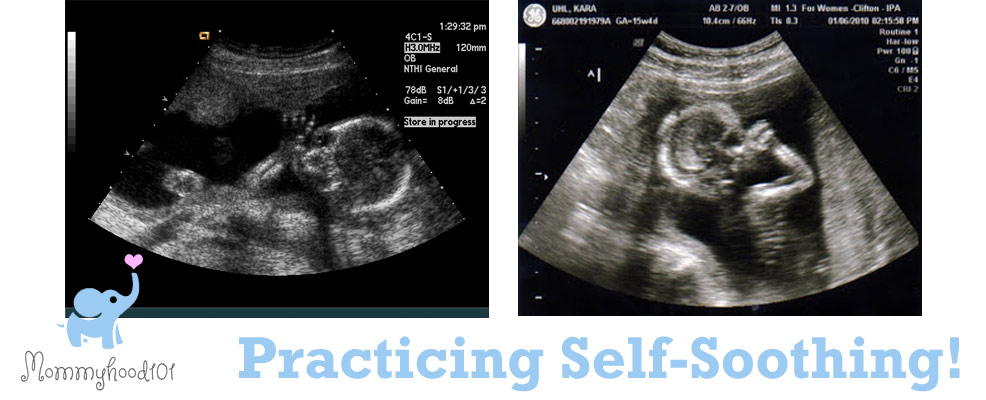
Getting Bigger and Stronger! Your little fetus is quickly growing up, gaining about a quarter pound of weight every week! Fat cells are forming, adding weight and an extra insulating layer that helps your fetus regulate their own temperature.
Your baby is also getting stronger every day, developing the muscles they will use to latch onto your nipple during breastfeeding, grip your finger, and kick and flail their arms and legs.
Brain Development Continues. The third trimester is critical for development of the cortex, the outer layers of the brain (the wrinkled layers near the surface) that are responsible for things like higher-level cognition, including perception, language, and motor control (Ref 10).
During month 7, new connections are emerging that bridge the brain stem, subcortex and limbic brain regions (the "lizard brain" areas) to emerging cortical regions. Neurons and their connections are reorganized and pruned, and myelin insulation grows on the neuronal axons.
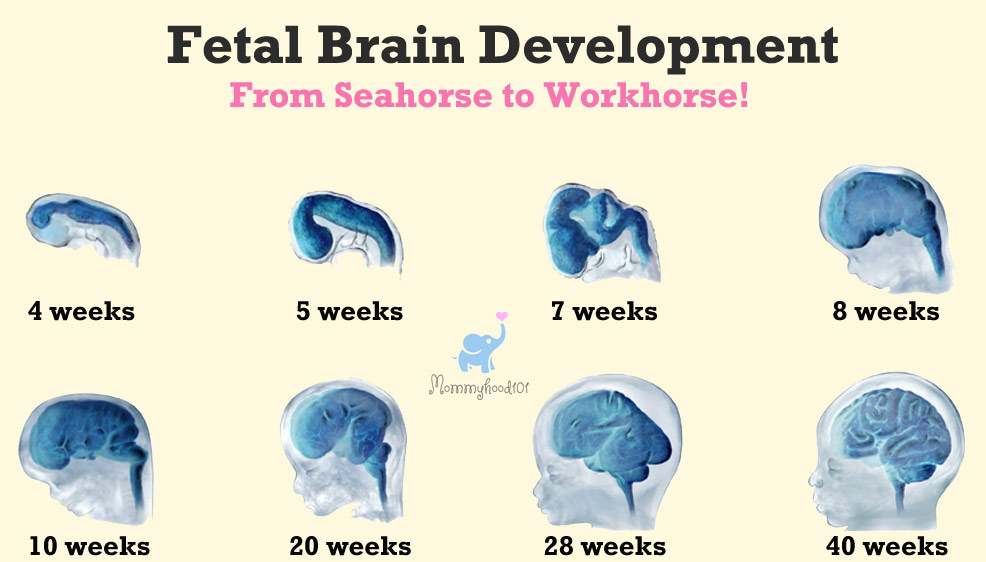
Hands, Fingernails, and Skin. Your baby now has fully developed hands, and fingernails are continuing to grow. They might be pretty long by the time your baby is born, so watch for scratches!
Also, remember that fine hair all over your baby's body, called lanugo? Well, that's starting to slowly disappear from the body, revealing a soft layer of pink baby skin!
Pedaling the Feet and Hands. Here's a funny one - your baby won't learn how to ride a bike until they are around 5 years old, but that doesn't stop them from practicing their pedaling! You might feel rhythmic movements coming from the womb, which could be your baby pedaling their legs like they're riding a bike, or even pedaling their arms.
Pedaling is part of a larger repertoire of surprising fetal movements, including climbing or playing with the umbilical cord, pirouettes, playing with the hands, and lulling (positioning itself to sleep in certain areas of the womb) (Ref 11).
By the end of the seventh month, the fetus is now about the size of a cantaloupe, and close to 3 pounds!
Month 7: Pregnancy Symptoms
Now that you've successfully gotten through what moms call the "easiest trimester" (the second one), you'll start to feel some more symptoms that are unique to the third trimester. A lot of this comes in the form of aches, pain, swelling, and weight gain. You're on the final stretch, however, and you should start seeing a dim light at the end of the tunnel!
Progesterone and estrogen are increasing rapidly at this time, and hCG has leveled-off at moderate amounts.
Backache and Sciatica: If you haven't already experienced back aches or sciatic nerve pain, this is the time when it becomes most common. Sciatic nerve pain arises from a part of the spine compressing and aggravating a nerve. The pain usually starts around the spine and emanates down one leg (and sometimes two legs).
To relieve the pain of sciatica during pregnancy, you can try some light stretching of your back, hips, legs, and buttocks. There are some great stretches here. Also try lying down on your side, preferably the side opposite of the pain, which can help relieve pressure on the nerve.
Itchy Skin and Stretch Marks. If you didn't notice stretch marks popping up during the second trimester, the rapid weight gain occurring during months 7-8 might produce some new marks on your abdomen, thighs, or butt. The stretching and contorting of your skin to accommodate your baby also tends to dry out the skin, possibly making for more pronounced stretch marks. It's a good time to try out some lotions or belly butters.
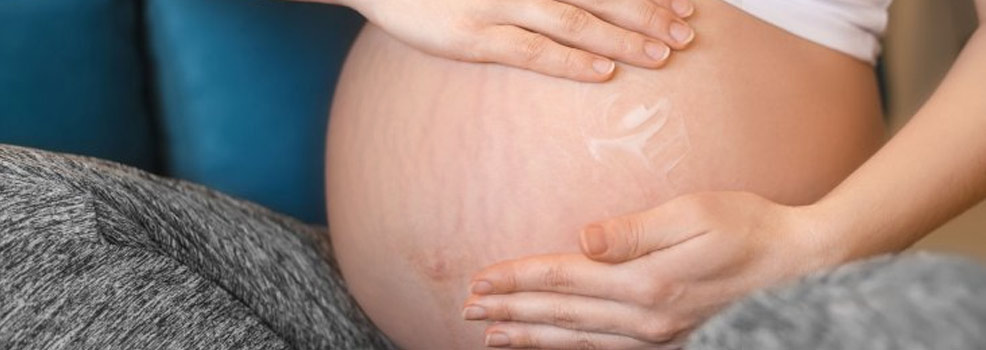
Varicose & Spider Veins. As though stretch marks weren't bad enough as-is, your skin may also develop very pronounced varicose veins and spider veins during pregnancy. We spoke about these during the second trimester, but they might get more pronounced, especially on the breasts and legs.
Lightheadedness & Migraines. As your body continues to struggle developing additional blood and supplying blood and oxygen throughout your body, you might experience brief moments of feeling lightheaded or dizzy. You might also get migraines more than usual.
Symphysis Pubis Dysfunction (SPD). This is sometimes called pelvic girdle pain (PGP), and occurs when ligaments attached to your pelvic bone become misaligned and stretchy. Nature designed the ligaments to become more stretchy as birth approaches, but if the signals from your body (the release of relaxin) occur too early or in an asymmetric way, it can become painful.
Pain caused by SPD is usually felt in the pubic area, groin, inner thigh, and lower back. It usually becomes worse when you carry something, climb stairs, or when lifting one leg (Ref 12).
Stuffy or Runny Nose. Not only are you producing more mucus in your vaginal canal, you might also notice that your nose is acting like you have a cold or allergies. A stuffy, runny nose is pretty common during the third trimester, and might even cause you to start snoring! Or, cause you to start snoring more than usual!
Melasma or "Pregnancy Mask" If you have a linea nigra on your tummy, there is an increased chance that you might also develop melasma on your face (Ref 13). Melasma is a temporary discoloration, usually darkening, of your face that occurs during pregnancy and resolves itself after childbirth. It might appear like freckles, sun spots, or like a dark rash (without the itch!). It's completely harmless, though you might not appreciate how it looks.

Breast Growth. If you didn't notice your breasts getting larger during the second trimester, the third trimester might surprise you! During month 7, your breasts should be getting even larger, might be tender to the touch, and likely have darker areolas and spider veins. You won't be surprised to learn that all of this is getting them ready for breastfeeding, making sure they receive ample blood flow to support milk production, and making them stand out a bit more visually (your areolas become giant targets!) for your baby to latch onto.
Clumsiness, Fatigue, and Sleep Issues. Just like in the second trimester, you might notice that you're getting a bit clumsier than usual. This is for a few reasons, chief among which is the increase of relaxin and resulting ligament stretching. Another reason is that you're likely getting a bit of "pregnancy brain" which can affect not only thinking but also coordination and motor control. Be careful, and ask your partner for help when you need to carry things, navigate stairways, or walk over uneven surfaces.
You also are likely feeling more tired than usual, which is completely normal. Unfortunately, this fatigue doesn't always translate to better sleep. All that discomfort, need to urinate, indigestion, and changing hormone levels can make it more difficult to fall asleep, stay asleep, and achieve restorative deep sleep. All those people who tell you to "sleep while you can" need to take a short walk off a long pier!
Crazy Dreams! When and if you do fall asleep, you might notice that you're having more frequent and intense dreams than usual. Research shows that about 21% of pregnant women in the third trimester report having a nightmare at least once per week, and this can exacerbate night awakenings and make it harder to fall back asleep (Ref 14).
Frequent Urination and Poor Bladder Control. As your baby get bigger and heavier, it also puts more pressure on your bladder. As if it wasn't bad enough in the second trimester, you might not only feel like you need to pee all the time, but it might also get harder to control your bladder. Don't be surprised if you have a little pee accident from time to time! Be sure to drink a lot of water to make sure you stay hydrated with all that peeing, and stay close to a restroom at all times!
Heartburn, Constipation, Hemorrhoids. None of this should surprise you, because we've been warning you about this all along! The second and third trimesters are full of heartburn, indigestion, constipation, and hemorrhoids. What fun! As progesterone and estrogen continue increasing through the third trimester, these conditions might even worsen. As we've been saying through the first and second trimester, try to eat small meals throughout the day, avoid spicy or highly flavorful foods, and eat a lot of fruits and leafy green vegetables.
Shortness of Breath. Before your baby turns to a head-down position, its head will begin to push harder and more consistently onto your diaphragm, giving you shortness of breath. Not to mention how hard your heart is working to produce and pump more blood than ever before, you've probably gained about 15-20 pounds already, and your body just doesn't feel as fit and coordinated as before pregnancy!
Research shows that most (about 65%) pregnant women experience shortness of breath at least once, it's a relatively normal symptom of pregnancy, and it's most likely to occur early in the third trimester (Ref 15). To help relieve shortness of breath during pregnancy, try to maintain good posture (if possible!), and maybe consider using a pregnancy support belt to help relieve pressure from the diaphragm (and also the bladder and pelvis).
Weight Gain & Swelling. By the end of month 7, you've likely already gained about 15 pounds during your pregnancy, and will continue gaining about a half pound per week through the third trimester. A half pound per week? That's about what your baby will gain as well, so don't feel bad if you're a bit above that mark.
Pro-tip: Use our pregnancy weight gain tool to understand exactly how much weight you should be gaining during each week of your pregnancy!
Most of this weight is your fetus and amniotic fluid, but you should also see weight gain in your breasts, buttocks, and thighs. Along with the weight gain will come swelling as fluid accumulates in your feet, ankles, and hands. This is called edema, and happens for two primary reasons. First, fluids are accumulating to help nurture your baby, but they might not be distributed evenly throughout your body. Second, as your body produces more relaxin and sends it off to your ligaments, this can cause muscles and bones to loosen up and spread out in your feet and ankles, causing them to appear larger.
If your feet haven't grown a size or two already by this time, expect to upgrade temporarily to wider or bigger shoes during the third trimester!

Month 8 Development
During weeks 32-36 of pregnancy, the fetus will develop from about the size of a cantaloupe, to about the size of a big pineapple. It is also likely to hit about 6 pounds by the end of the eighth month of pregnancy! That's about the same weight as a big bag of sugar, or a typical red brick.
Before pregnancy, did you ever carry one of those around all day!?
Unprecedented growth! During the seventh and eighth month, the fetus will pack on about a half pound of weight per week, insulating themselves with a fatty layer, and developing their big, smart brain! That's pretty rapid growth. Towards the end of this month, growth will slow down and plateau, with a full-term baby likely being about 7 pounds and 8 ounces (Ref 16). Your baby has gotten so big that they are now filling the womb and the amniotic fluid is at full capacity.
Here are updated fetal growth charts from girls and boys born in the United States (Ref 17). Look within the pink or blue bands for typical (25th to 75th percentile) growth rates.
Notice how the steepest part of the lines is between weeks 32-36? That's the unprecedented growth we're talking about! Notice also how in the last month of pregnancy (weeks 37-40), the lines start to plateau.
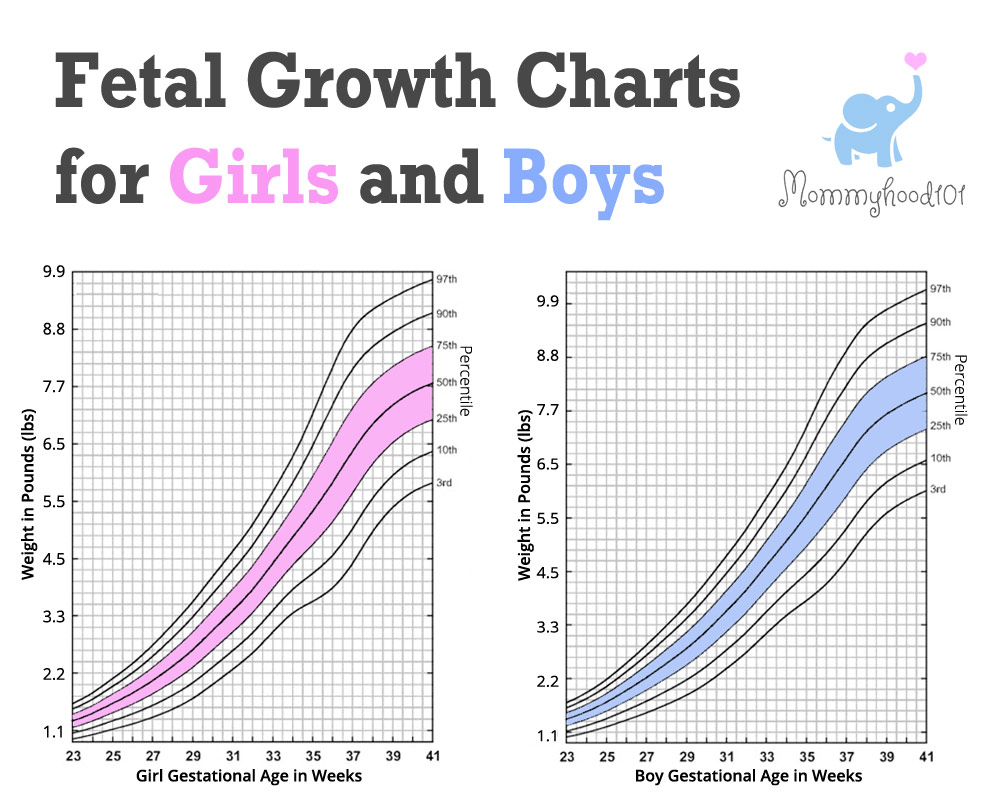
Organs Fully Formed. The major organs, including the lungs, heart, liver, kidneys, brain, and stomach are all going to be fully formed by the end of the eighth month! This doesn't mean that each organ will continue developing after birth, of course it will! In fact, some organs like your brain continue developing until you're well into adolescence; it's nowhere near finished developing when you're born (Ref 18).
But it's safe to say that by the end of month 8, all the organs are structurally and functionally ready for prime-time!
Breathing Practice. Your growing baby will make breathing movements that start to look like tiny breaths, sighs, and rhythmic breathing. Of course, there's no air for them to breathe while in the womb, but it's good practice!
Research shows that third trimester fetal breathing movements occur about 30% of the time, and are more frequent during the afternoon than morning (Ref 19). It's unlikely you'll be able to feel these movements, but they are visible on ultrasound.
Lanugo, Skin, and Fat. The lanugo continues to shed from your baby's body, and the skin will become more opaque. Underneath the skin, a thick fat layer will continue to form, providing insulation to help your baby regulate his or her body temperature after birth.
Head-down Position. During the later part of month eight, the fetus might flip itself upside-down to assume a head-down position. It usually doesn't happen quite this early, but it's definitely possible! During a visit to your doctor around 38 weeks, he or she will check whether your baby has assumed a head-down position, or if they might be breeched (see definitions, above).
Sleeping and Waking. Your baby will start to assume regular sleep and wake cycles, hopefully transitioning to a cycle that's more similar to mom's. Even if it's not mapped to mom's sleep cycle, your baby will start to establish sleep and wake cycles throughout the day. The eyes will be open during awake times, and closed during sleep times, just like a newborn baby!
You might notice the emerging sleep cycles, with periods of relative calm versus activity. You might also notice that these new sleep cycles will also maintain after birth, giving you some predictability of when your baby is most likely to sleep or be active. That last part might be wishful thinking!
Soft Spot or Fontanelle. As your baby's skull develops, the five major portions of the skull don't completely fuse together until after birth. There are two gaps on the head, called fontanelles, one towards the front of the head (anterior fontanelle), and one towards the back (posterior fontanelle). These gaps, along with the suture lines between the portions of the skull, provide room for contraction of the skull plates inward while your baby moves through the narrow birth canal.
When your baby is born, the anterior fontanelle is called the "soft spot" because it feels different from the rest of your baby's head.

Immune System Development. Your baby's immune system has been quietly developing over the past several months, likely reacting and adapting to your cells, substances in the amniotic fluid, antigens from foods you consume, and microbes (Ref 20). During the third trimester and around month eight, the immune system is ready to protect itself after birth.
Movement: From Kicks to Rolls. You'll notice changes in the way your baby moves around this time. The usual kicks and punches will start to transition to more squirmy wiggles and rolls. This is partly because there is minimal room for movement inside your uterus at this point, but also because your fetus is developing smoother and more coordinated movements.
Month 8: Pregnancy Symptoms
The Usual Suspects. Rather than reiterate everything we covered for month 7, you can expect to experience the usual suspects during month 8. These include Braxton Hicks contractions, heartburn, indigestion, constipation, fatigue, faint headedness or dizziness, frequent urination and loss of bladder control, itchy skin and stretch marks, sleep disturbances (insomnia, nightmares), round ligament pain, headaches, migraines, pregnancy brain, and bleeding gums. No surprises here, these have been around for at least a few months now!
But during month eight, you might also begin to experience some novel symptoms, including:
Limbs Poking Through: Well, not really poking through, but you might notice the impression of a hand or foot on your stomach, along with the pressure of your baby pushing against you. As if they're fighting to be let out of this cramped space, some moms say that it feels like their baby hatched an escape plan during the eighth month!
Not all moms experience this, but it can be pretty amusing to see a little hand or foot pushing outward from the womb! Take a picture to show your child when they're old enough to be embarrassed!
Colostrum. Colostrum is the liquid gold that will begin leaking from your breasts around months 8-9. Leaky breasts during pregnancy might take you by surprise, but it's not only very common but also a very important phase in milk production. You may want to get used to those leaky breasts because they'll be sticking around for a few months after birth!
If you breastfeed, colostrum will be the first fluid your baby drinks, and it is loaded with nutrients and immune, tissue repair, and growth factors. Colostrum plays a critical role in the development of a mature immune system, has natural anti-microbial agents, and is the only natural source of several growth factors (Ref 21).
Brittle Nails and Hair. While all that hCH may have made your hair and nails look amazing during the second trimester, you might notice that things aren't looking quite as nice anymore.
Towards the end of the third trimester, many moms realize that their hair and nails seem more dry and brittle than before, so keep some conditioner on hand, and make time for those mani-pedis!

Month 9 Development
This is your final month of pregnancy, extending from weeks 37 through 40, and bringing you right up to labor and delivery!
This is an exciting and scary time for women, especially first-time moms, with a lot to think about.
During the final month of pregnancy, your baby puts the final touches on his or her development, and your body takes the final steps towards being ready to give birth. Here's what your baby-to-be is up to:
Growth Slows Down. Remember when we told you that your baby was growing at an unprecedented rate through months 7 and 8? Now that's going to slow way down. Instead of your baby continuing to grow, your body needs to focus on getting ready for delivery. You'll see what we mean in the below Symptoms section!
Soft Bones and Cartilage. Your baby has bones and cartilage, but his or her bones are much softer than yours. Why? Well, just like the skull doesn't completely take shape, the bones also need to stay soft to ensure they can get smooshed and contorted while making their way through the narrow birth canal. Over the first couple months and years of life, those bones will become increasingly hard and strong, just like yours!
Squirmy Movements. There's not much room left in the womb for your baby, and all those jerky punches and kicks are now turning into squirmy movements. By now (typically around week 38), your baby should have flipped into a head-down position, and the squirming will become slower and more deliberate feeling.
Grasping and Thumb Sucking. If you had an ultrasound right now, you might see that your baby is grasping at random things in your uterus. Maybe the umbilical cord, their ears, feet, or toes. They're developing their grip, which will help them latch onto your finger when you tickle their palms! They might also be sucking their thumb, and continuing to swallow little amounts of amniotic fluid.
Lungs and Vocal Cords. Your baby's lungs are now fully developed and ready to breathe without assistance. Their vocal cords are also developed and ready to start yelling when they meet mom!
Head Size Increases. While your baby's overall size growth has slowed down, the head slowly continues to get larger. Don't worry, the fontanelle will keep it soft and pliable, even if it's the size of a watermelon!
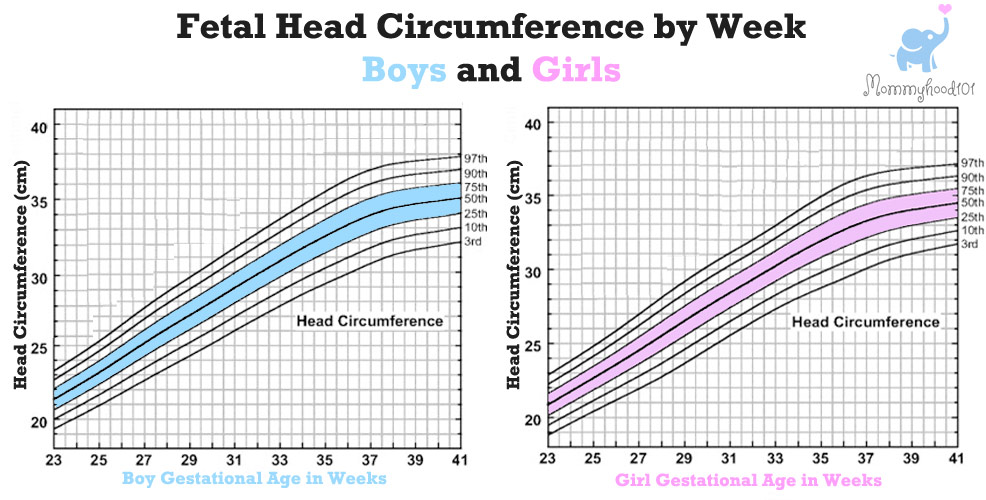
Shedding Lanugo & Vernix. Say goodbye to all that lanugo hair and the layer of vernix on your baby's skin. During the ninth month, your baby will start shedding lanugo and vernix, revealing skin that is turning less pink every day and starting to look like their real skin tone. But remember that the lanugo and vernix was there to protect sensitive skin from the drying effect of the amniotic fluid. Get the lotion ready, their skin might be pretty dry when they're born!
We hope you're ready, because at this point, your baby certainly is!
Month 9: Pregnancy Symptoms
The Usual Suspects. You know the drill. Indigestion, heartburn, back and hip aches, and all the other symptoms you've been feeling for the past couple months. They're still around. Don't worry, once your baby is born they will quickly subside! Keep taking your prenatal vitamins!
The Pregnancy Waddle! Walking a little funny? Leaning back, flaring your feet out to the side, and starting to walk like a bit like a duck? That's the pregnancy waddle! If you don't notice the change, others will, so prepare for comments!
Nesting Instinct. This might sound silly, but late in the third trimester many women develop an urge to clean and organize their surroundings, preparing for the arrival of their little one. This is called the nesting instinct, and is very similar to what is seen in non-human mammals (like finding an actual nest site, building a nest, and defending the nest!).
Research shows that the nesting instinct is not only real, but it's experienced by most women, and it tends to peak in the third trimester (Ref 23). Furthermore, nesting not only includes cleaning and organizing, it can also include being more selective about who is around during the days leading up to labor, and during delivery (called "social selectivity"). According to evolutionary psychologists, nesting serves an important protective function, preparing a safe and clean space for yourself and your baby.
Practically speaking, it's around the time you'll start to feel some final anxiety about getting the nursery and your hospital bag ready for prime time! Now is the time to show of that nursery you've prepared - just avoid those crib bumpers!
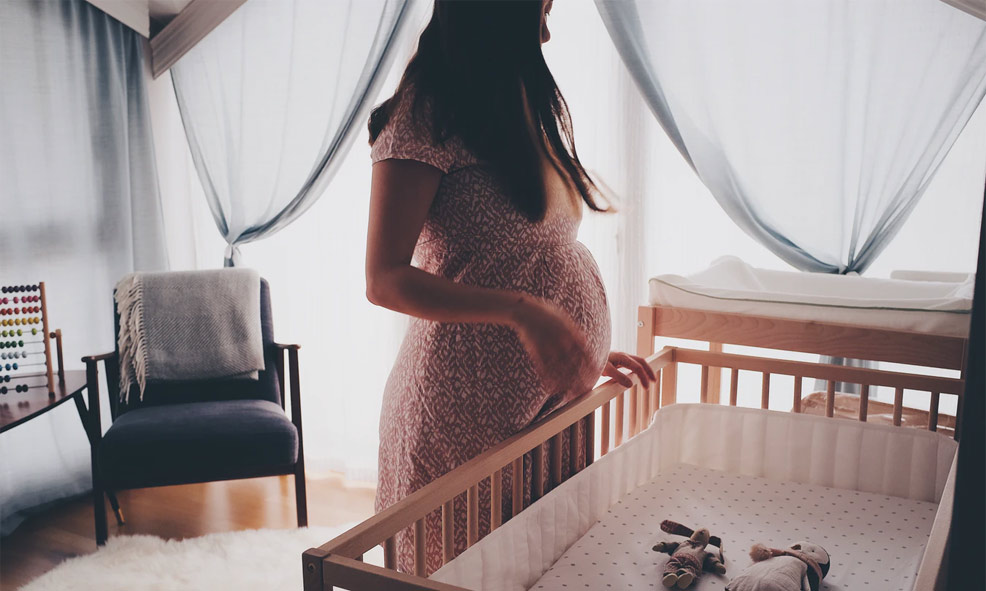
Breast Changes. Not only are your breasts likely to be bigger than ever before, a little tender to the touch, and have big dark areolas, you might notice that your nipples are at attention throughout the day! Not only will your baby see the areolas standing out like big targets, they will smell the colostrum, and feel the nipple when they approach. That's three sensory modalities helping your baby find your nipple - talk about evolution, this is amazing!
Cervical Dilation and Effacement. As you get closer to labor, your cervix will slowly begin to dilate (open) and efface (soften). As this happens, your baby will begin slowly putting more pressure on your cervix as it begins its journey into the birth canal.
Baby Drops - Lightening! This is a big step towards delivery! As the cervix dilates and effaces, the baby begins to drop lower into your uterus. This is called lightening, and many moms report feeling a dramatic change in pressure and positioning of the baby in the uterus.
If you look in the mirror, you might notice more space between the peak of your belly and the bottom of your breasts. You might also notice that some of the pressure that was giving you shortness of breath is finally subsiding as the pressure is relieved from your diaphragm.
For first-time moms, lightening can happen even weeks before active labor, but for second-time moms it could mean jut a few hours before active labor. Every mom is different, and every body reacts differently to this process; some might not notice anything different at all.

Mucus Plug and Bloody Show. As your cervix dilates, the mucus plug that was filling up space between your vagina and uterus will start to come free. The mucus plug usually falls out when you're about 1-4cm dilated, but it might fall out sooner (and sometimes even after delivery!). Some people call this the "bloody show" because the mucus might have a bit of dark blood in it. If you notice any pink or red blood, or think you're bleeding, contact your doctor immediately.
Contractions. You'll know when you're having real contractions (rather than Braxton Hicks) when:
- Real contractions can get stronger with physical activity.
- Real contractions don't go away when you change position.
- Real contractions become stronger with time.
- Real contractions tend to occur in a somewhat regular pattern (like one every 3-5 minutes as an example).
- Real contractions get stronger and more frequent with time, and you will notice that after an hour they are much stronger and more frequent than they were an hour ago.
- Real contractions tend to be felt through a broader portion of the body, and are not isolated to just the tummy area.
- Real contractions get painful, not just uncomfortable.
Your doctor will tell you what to look for in terms of the frequency of contractions. In early labor, you might have a contraction every 5-10 minutes, and then they will begin to get more frequent with time.
If you don't remember what your doctor said, or if you're having difficulty timing your contractions, definitely reach out to your doctor.
Water Breaks. In the above picture, notice how the thin amniotic sac is still holding the womb together even when you're about 4-5cm dilated? That's now the last thing holding your baby back from entering the birth canal, and it's under increasing pressure. When it ruptures, this is called your water breaking, and is a sure sign that you're heading into active labor!
If your water does break, immediately call your doctor and have some information ready for them: color of the discharge, any smells, the approximate amount of the discharge, and exactly when it happened.
Your medical provider will use these details to gauge how imminent your labor is.
Check out more early signs of labor.
Labor and Delivery. If you haven't already, it's definitely time to call the doctor!
Many doctors will tell you to call them when your contractions are spaced about 2-3 minutes apart, unless you live very far (over 30-60 minutes) from the hospital. Some might tell you to call when your water breaks, or when you feel an urge to push. Every doctor's office is a bit different and will have different guidance for you; they know you best, so definitely do not be shy to give them a call.
Immediately call your doctor if you have any bleeding, your water breaks, if you have any colored discharge (for example pink, green, brown), or if you're feeling lightheaded or dizzy, have a headache, or double vision.
Just in case we don't get another chance to say it before your big day, CONGRATULATIONS!!
References
In developing this guide, we consulted with physicians, pediatricians, and biologists. Additional resources were gathered from The Office on Women's Health, the Nemours Foundation, American Pregnancy Association, and the Mayo and Cleveland Clinics. Additional scientific resources (Refs 1-22) cited in the article can be found here:
1. Hanghøj, S. (2013). When it hurts I think: Now the baby dies. Risk perceptions of physical activity during pregnancy. Women and Birth, 26(3), 190-194. https://www.sciencedirect.com/science/article/pii/S1871519213000620
2. Raines, D. A., & Cooper, D. B. (2017). Braxton Hicks Contractions. Treasure Island, FL: StatPearls Publishing. https://www.ncbi.nlm.nih.gov/books/NBK470546/
3. Anderson-Bagga, F. M., & Sze, A. (2019). Placenta previa. Treasure Island, FL: StatPearls Publishing. https://www.ncbi.nlm.nih.gov/books/NBK539818/
4. Hannah, M. E., Hannah, W. J., Hewson, S. A., Hodnett, E. D., Saigal, S., Willan, A. R., & Collaborative, T. B. T. (2000). Planned caesarean section versus planned vaginal birth for breech presentation at term: a randomised multicentre trial. The Lancet, 356(9239), 1375-1383. https://www.sciencedirect.com/science/article/pii/S0140673600028403
5. Hickok, D. E., Gordon, D. C., Milberg, J. A., Williams, M. A., & Daling, J. R. (1992). The frequency of breech presentation by gestational age at birth: a large population-based study. American Journal of Obstetrics & Gynecology, 166(3), 851-852. https://www.ajog.org/article/0002-9378(92)91347-D/pdf
6. Christensen, F. C., & Rayburn, W. F. (1999). Fetal movement counts. Obstetrics and gynecology clinics of North America, 26(4), 607-621. https://www.sciencedirect.com/science/article/pii/S0889854505701029
7. Reissland, N., Francis, B., Mason, J., & Lincoln, K. (2011). Do facial expressions develop before birth?. PLoS One, 6(8), e24081. https://journals.plos.org/plosone/article?id=10.1371/journal.pone.0024081
8. Horimoto, N., Koyanagi, T., Satoh, S., Yoshizato, T., & Nakano, H. (1990). Fetal eye movement assessed with real-time ultrasonography: are there rapid and slow eye movements?. American journal of obstetrics and gynecology, 163(5), 1480-1484. https://www.sciencedirect.com/science/article/abs/pii/000293789090609B
9. Birnholz, J. C. (1981). The development of human fetal eye movement patterns. Science, 213(4508), 679-681. https://science.sciencemag.org/content/213/4508/679.abstract
10. Prayer, D., Kasprian, G., Krampl, E., Ulm, B., Witzani, L., Prayer, L., & Brugger, P. C. (2006). MRI of normal fetal brain development. European journal of radiology, 57(2), 199-216. https://www.sciencedirect.com/science/article/pii/S0720048X05003852
11. Stocche, T. M., & Funayama, C. A. R. (2006). Approach to the fetal movements: a pilot study of six cases. Arquivos de neuro-psiquiatria, 64(2B), 426-431. https://www.scielo.br/scielo.php?pid=S0004-282X2006000300014
12. Depledge, J., McNair, P. J., Keal-Smith, C., & Williams, M. (2005). Management of symphysis pubis dysfunction during pregnancy using exercise and pelvic support belts. Physical Therapy, 85(12), 1290-1300. https://academic.oup.com/ptj/article/85/12/1290/2805046
13. Moin, A., Jabery, Z., & Fallah, N. (2006). Prevalence and awareness of melasma during pregnancy. International journal of dermatology, 45(3), 285-288. https://onlinelibrary.wiley.com/doi/full/10.1111/j.1365-4632.2004.02470.x
14. Lara-Carrasco, J., Simard, V., Saint-Onge, K., Lamoureux-Tremblay, V., & Nielsen, T. (2014). Disturbed dreaming during the third trimester of pregnancy. Sleep medicine, 15(6), 694-700. https://www.sciencedirect.com/science/article/pii/S1389945714001142
15. Goland, S., Perelman, S., Asalih, N., Shimoni, S., Walfish, O., Hallak, M., ... & Blondheim, D. S. (2015). Shortness of Breath During Pregnancy: Could a Cardiac Factor Be Involved?. Clinical cardiology, 38(10), 598-603. https://onlinelibrary.wiley.com/doi/full/10.1002/clc.22452
16. Olsen, I. E., Groveman, S. A., Lawson, M. L., Clark, R. H., & Zemel, B. S. (2010). New intrauterine growth curves based on United States data. Pediatrics, 125(2), e214-e224. https://pediatrics.aappublications.org/content/125/2/e214.short
17. Olsen, I. E., Groveman, S. A., Lawson, M. L., Clark, R. H., & Zemel, B. S. (2010). New intrauterine growth curves based on United States data. Pediatrics, 125(2), e214-e224. https://pediatrics.aappublications.org/content/125/2/e214.short
18. Giedd, J. N., Blumenthal, J., Jeffries, N. O., Castellanos, F. X., Liu, H., Zijdenbos, A., ... & Rapoport, J. L. (1999). Brain development during childhood and adolescence: a longitudinal MRI study. Nature neuroscience, 2(10), 861-863. https://www.nature.com/articles/nn1099_861
19. Patrick, J., Fetherston, W., Vick, H., & Voegelin, R. (1978). Human fetal breathing movements and gross fetal body movements at weeks 34 to 35 of gestation. American journal of obstetrics and gynecology, 130(6), 693-699. https://www.sciencedirect.com/science/article/abs/pii/0002937878903307
20. McGovern, N., Shin, A., Low, G., Low, D., Duan, K., Yao, L. J., ... & Soon, E. (2017). Human fetal dendritic cells promote prenatal T-cell immune suppression through arginase-2. Nature, 546(7660), 662-666. https://www.nature.com/articles/nature22795
21. Uruakpa, F. O., Ismond, M. A. H., & Akobundu, E. N. T. (2002). Colostrum and its benefits: a review. Nutrition research, 22(6), 755-767. https://www.sciencedirect.com/science/article/pii/S0271531702003731
22. Anderson, M. V., & Rutherford, M. D. (2013). Evidence of a nesting psychology during human pregnancy. Evolution and Human Behavior, 34(6), 390-397. https://www.sciencedirect.com/science/article/pii/S1090513813000706






